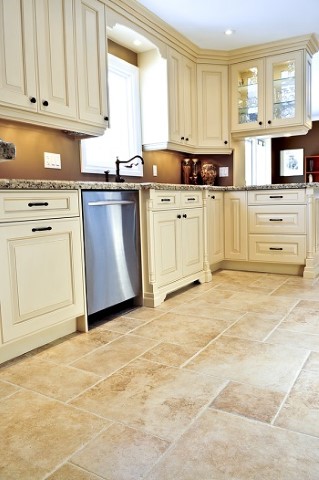Advantages Of Ceramic and Porcelain Tile

Durability: Porcelain flooring is very durable and the tiles are difficult to crack. A quality installation can last for 10 to 20 years and even longer if well maintained.
Water Resistant: Glazed ceramic and porcelain tiles have a non porous layer of liquid glass that sits on top of the tiles making them impervious to water and stain penetration. They are also naturally resistant to the ravages of high humidity conditions. These properties makes them ideal for use in wet environments like bathrooms and kitchens.
Tiles that are not glazed will need to be sealed in order to protect their surface from liquids.
Maintenance: Tile is easy to care for. Dirt and stains rest on the tile surface making then easy to clean. Maintenance consists of wiping, sweeping or vacuuming with a soft brush attachment to keep the tile free of dust and dirt. If a stain does occur use a non toxic cleaner and rub it until its removed.
Color Options: Porcelain tiles allow for a wider range of styles and colors.
Modern manufacturing allows tiles producers to make materials which can be printed in all types of ways. Tile can be printed to reproduce the look of a number of hardwoods and stones.
Pricing: Most tiles costs between $3.50 and $8 a square foot.
Allergies: “Porcelain and ceramic tiles are some of the best choices for allergy prevention. They’re easy to care for and dust accumulation is easy to spot and clean.”
The hard, flat surface of ceramic and porcelain tiles makes them a good choice for those with allergies. Tiles are easy to keep clean because dust mites, pollen and pet hair cannot penetrate their impervious texture. Both ceramic and porcelain tiles are highly water resistant. This makes them a good choice for bathrooms and kitchens, where steam and water may cause mold and mildew. Although ceramic and porcelain are well suited for those with allergies, not every type of tile is a great option. Some tile materials, such as natural stone, may be more porous than others. Dirt and dust may snag in the uneven crevices, making these types of flooring less effective.
